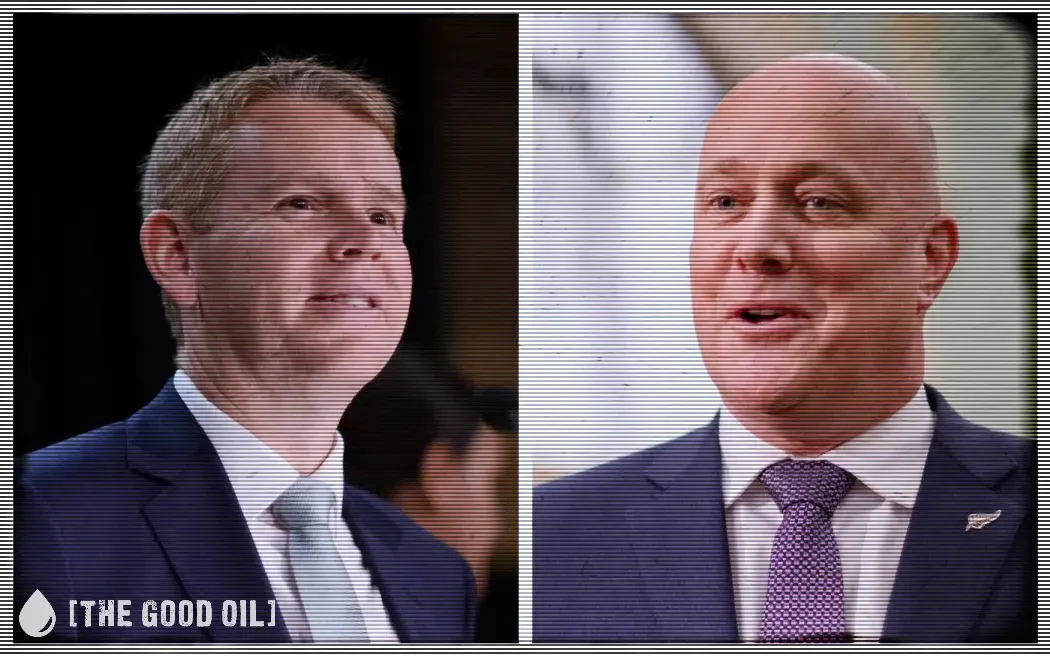Yvonne van Dongen
Veteran NZ journo incredulous gender ideology escaped the lab. Won’t rest until reality makes a comeback.
I attended the first-ever public showing of a documentary in Auckland about trans widows, called Behind the Looking Glass. Trans widows are the former female partners of men who decide to identify as women.
Given that the film was first released online in 2024 by Indian filmmaker Vaishnavi Sundar (pictured above), this public showing was a more momentous achievement than you might think and a tribute to Jill Ovens and the Women’s Rights Party who made it happen.
The small Takapuna theatre was full but, to date, Sundar’s experience is that films on the gender debate are generally ignored by mainstream institutions. She has previously made a four-part series on the impact of gender ideology on young girls called Dysphoric. Both are available online and recommended.
I saw the documentary when it first came out but I watched it again with the images of Benjamin Bussy and the messaging around that peculiar story swirling in my head. Shout out to Ani O’Brien, A B’Old Woman and @2ETEKA for pursuing that story in the face of media intransigence.
Messaging, as those of us involved in the gender culture war know all too well, is a key weapon in the gender ideologue’s armoury. As Bishop Desmond Tutu once said “Language does not just describe reality. Language creates the reality it describes.”
Sundar spoke to women from Asia, Europe and America who explained that the phenomenon is largely fuelled by online porn and that it is international, because, as Tina from Turners tells us (finger wiggle), the internet is everywhere.
Like victims of domestic violence, many stayed in what was essentially an abusive relationship, baffling to many of their friends and family. All the trans widows felt shame and understood that their kindness had been used against them but what interests me is what the trans widows were told when they attempted to come to terms with what was happening to them and their family.
Those who went to therapy talked about the difficulty of finding a therapist not steeped in gender ideology. Women were advised by therapists that they needed to show acceptance and tolerance. They were encouraged to affirm their partner.
One therapist told a woman she was trying to control the relationship and that was the cause of her anxiety, not her partner’s autogynephilia. Another was told by a doctor she needed tranquilisers to calm her down and, besides, “lots of women enjoy this as part of their sex life”. The advice from a clinic she attended “was to get over it and carry on”.
These views echo that of the advice dished out by Agony Aunts in newspapers in the 1960s. Dear Abby, a popular syndicated column in US papers of this era, scolded one woman sickened by her husband’s enthusiasm for wearing women’s clothes, writing “I am amazed you have not made an honest effort to learn more about it” and “...you may be doing him a disservice”. To a woman married for 32 years with four children upset about her husband’s fetish: “He is just like any other man but he likes to wear women’s clothes. You won’t have a problem unless you give him one at home.”
This advice had expert endorsement from Dr John Oliven who, in 1965, published Sexual Hygiene and Pathology intended to be used as a manual for psychiatrists. He advised psychiatrists to ensure men stay in the relationship to act as a buffer for their condition and a buffer from acting out in society. Psychiatrists were urged to do everything in their power to prevent women from leaving.
Not only that but single men with this fetish were advised to seek marriage. Should the bride be told of his ‘chronic deviation’? That required thought, wrote Oliven.
If trans widows are rarely considered in the stunning and brave stories of the men who publicly identify as women, their children are equally as invisible. So the interviews with the children of men who had transitioned were especially revealing. They talked about how they struggled with the normalisation of their father becoming another mother. “Dad had fallen in love with himself.”
I was reminded of the stories I read about Jan Morris’ children. Jan Morris was, of course, the famous writer who, as James Morris was the journalist who climbed Everest with the Hillary expedition in 1953 and wrote the first account of the ascent. In 1972 he transitioned to become Jan Morris (Hillary famously said on seeing Morris for the first time after transition, “Well, James has changed”) and wrote Conundrum about the experience, a ground-breaking book when it was published in 1974.
Jan Morris had four children, a girl and three boys. While one son described a happy childhood, another described Jan as self absorbed and emotionally distant. In an essay in the Guardian Mark Morris portrayed Jan as someone who was more devoted to her personal identity than to her role as a parent. He felt neglected and suggested her transition and literary pursuits took precedence over her children’s needs.
Jan’s daughter Suki was even more blunt. She called him a bully who couldn’t even hug his children.
“I was told I mustn’t call my father ‘Daddy’ any more, but must call him ‘Jan’,” writes Suki. “I piped up that Jan was a woman’s name and was immediately told that in Scandinavia the name is used for both men and women.”
And that was that. From then on, if she called her father ‘Daddy’, there would be no answer from him.
Given my previous thoughts on kindness and Be Kindism, it’s intriguing to read Jan Morris was a great believer “in the religion of kindness” even though, to Suki, she was anything but kind.
“There was a drip, drip of unkindness with her, undermining everything, making me look and feel inferior and worthless,” Suki is quoted as saying in Paul Clements’ biography of Jan Morris, Life From Both Sides.
So there’s the narcissism, the cruelty and the victimhood, always the victimhood. Trans are the eternal victims, claiming they are constantly targeted, unjustly treated, denied the most basic human rights and regularly killed. None of this is true.
Emma Thomas, whose father transitioned when she was nine, explained that her father so wanted to be a victim, he even claimed to have had polio as a child. Again, not true. She went on to found “Children of Transitioners” in the UK.
No surprise then that the Greens want us to believe Benjamin Doyle is also a victim of “immense” death threats and guilty only of absurd and irreverent social media posts. As with the trans issue, I can’t help but think of the children, in particular, his child who he is rumoured to be transitioning. Hard to believe, since the child is under 10, so I’m really, really, hoping this isn’t true. Or, at the very least, that the suitable agencies are taking this seriously. Someone needs to.
This article was originally published on the author’s Substack.







